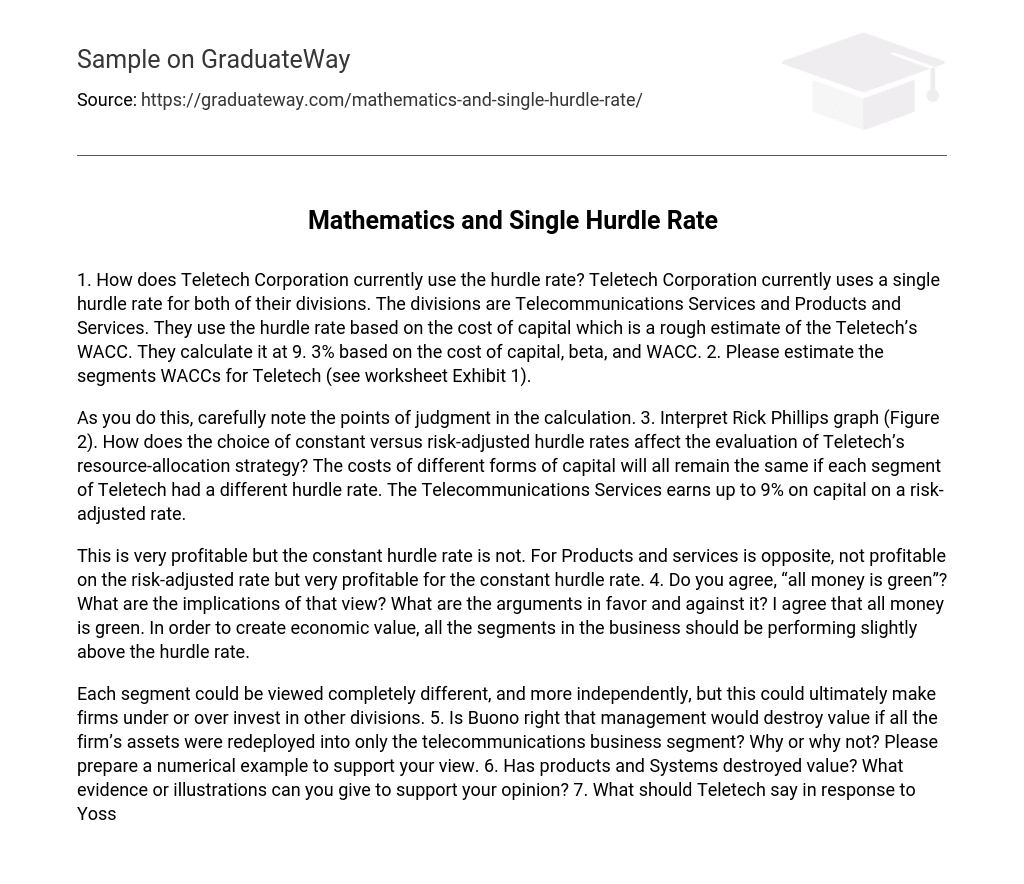Currently, how does Teletech Corporation utilize the hurdle rate?
Teletech Corporation currently applies the same hurdle rate for its two divisions: Telecommunications Services and Products and Services. This hurdle rate is determined by estimating Teletech’s weighted average cost of capital (WACC). The calculation incorporates the cost of capital, beta, and WACC, resulting in a rate of 9.3%.
What impact does choosing constant or risk-adjusted hurdle rates have on the assessment of Teletech’s resource allocation strategy?
Regardless of the differing hurdle rates for each segment of Teletech, the costs of various forms of capital will remain unchanged. The Telecommunications Services segment generates a risk-adjusted rate of up to 9% on capital, making it highly profitable. However, the constant hurdle rate is not as profitable. On the other hand, the Products and Services segment is not profitable on the risk-adjusted rate but proves to be highly profitable for the constant hurdle rate.
What are the implications of the perspective that “all money is green”? What are the arguments supporting and opposing this viewpoint?
I concur with the notion that all money possesses equal worth. To generate economic value, it is crucial for every facet of a business to surpass the minimum required rate of return. However, perceiving each segment as isolated and unique may lead companies to either underinvest or overinvest in particular divisions.





